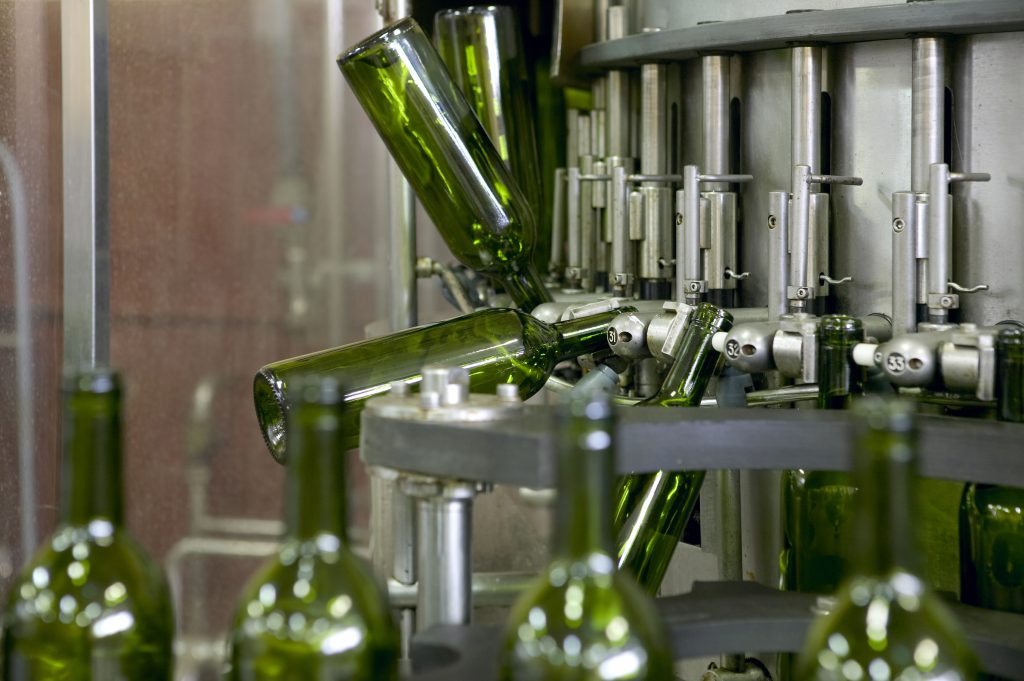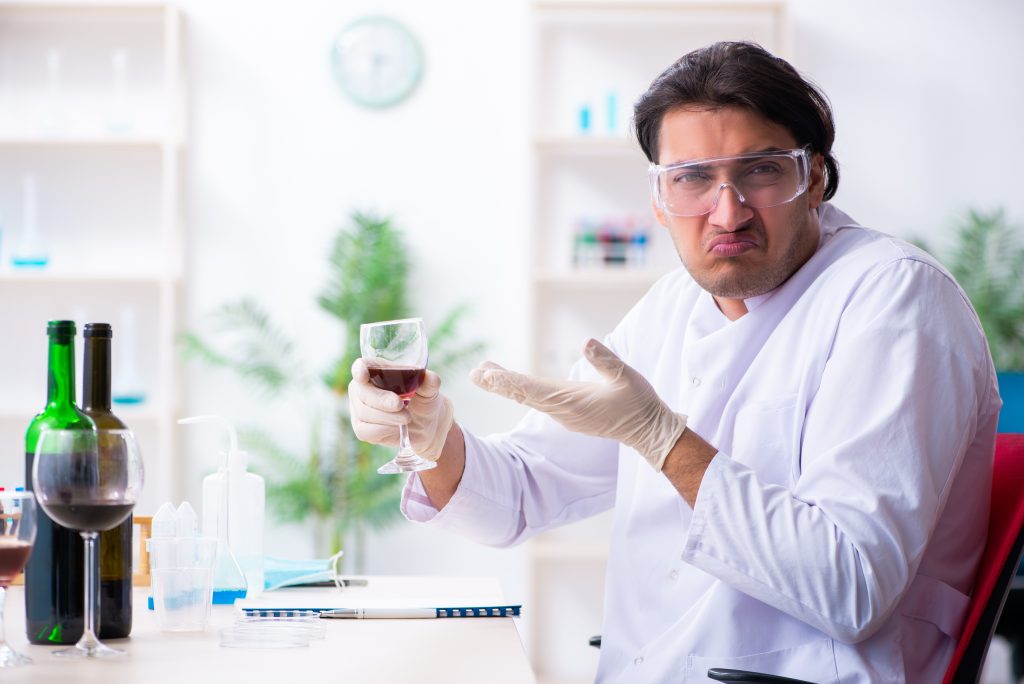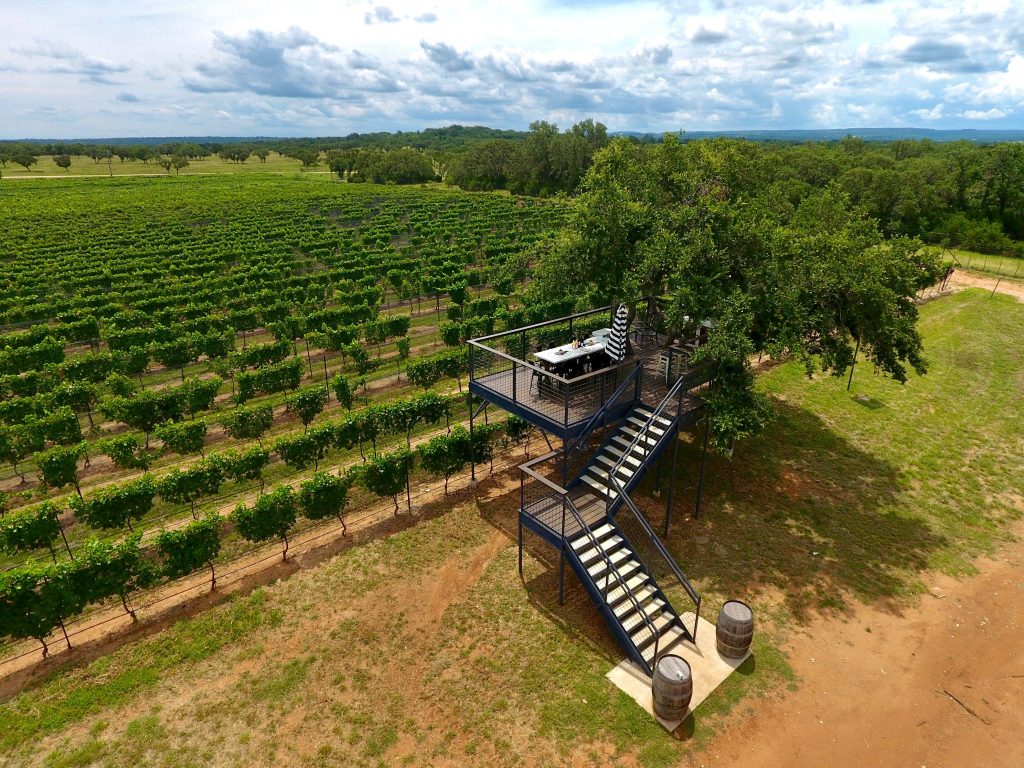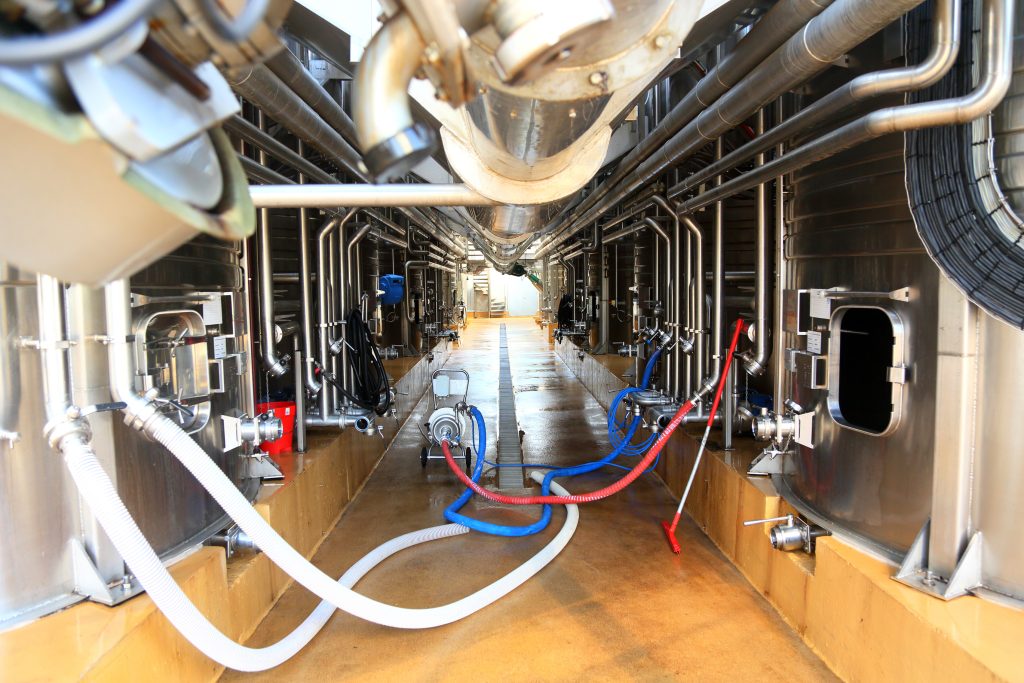Crafting World-Class Nebraska Wines and Ciders

By: Gerald Dlubala
Nebraska entrepreneur and Glacial Till Vineyard and Winery owner Mike Murman spent much of his free time in the 1980s making beer and wine as a hobby. However, when the demands of family life and work travel increased, he put those hobbies on the back burner: Priorities, you know.
Years later, Murman noticed the increasing number of vineyards and wineries popping up in his home state of Nebraska, renewing his previously tabled interest in winemaking. That spark was enough of a catalyst that Murman joined the Nebraska Winery and Grape Growers Association, attending numerous seminars and workshops over the next two years.
In 2003, Murman acquired six acres of land located southeast of Lincoln, Nebraska, in Otoe County and near the township of Palmyra, for personal and family use. Primarily purchased as a place to enjoy outdoor sporting and recreation activities, the spacious acreage was close to his family residence and presented the potential for Murman to rekindle his love affair with grape growing and winemaking. The terroir consisted of glacial till, a fertile, rocky soil left behind thousands of years ago after the glaciers that once covered North America receded. Grapevines tend to like this soil mix, so in the spring of 2003, Murman planted the first vines. He approached grape growing in an organized, systematic way, attending additional classes while studying vineyard orientation, preferred soil mixes and all things necessary for grape growing. A local professor from the University of Nebraska helped with soil testing, confirming that the soil was favorable for growing grapes. All property facets met the desired vineyard success criteria except for the slope orientation, his being northward rather than the preferred southward.
A record harvest in 2006 prompted the Murman’s to share the great wine with others, and Glacial Till Winery was born. In 2008, Glacial Till Vineyard became a bonded winery, which opened to the public in the summer of 2009.
Ability to Adapt Along the Way is Critical
“We were set on proving to the world that we could make and sell world-class wine in Nebraska,” said Murman. “But we quickly found that in addition to being a very competitive market, it was difficult to change consumers’ mindsets and convince them that world-class wines can come from the Midwest region, specifically the state of Nebraska. We knew then that we wouldn’t make it by solely selling wine, so we started to host events at our production vineyard.”
“We started an event called Fermented Fridays, regularly hosting live music and food trucks on our property while featuring a local craft brewery,” said Murman. “These became very popular and successful and, for the most part, brought in more money than initially trying to get our wines on the shelves. In fact, the events became popular enough that visitors started requesting the use of our space for weddings and events. Unfortunately, we weren’t set up for that type of event, so we decided to build a venue with proper facilities to host weddings, get-togethers or any other events. It turned into another business element for us, and we continue to expand business elements when we feel it’s beneficial.”
Murman told The Grapevine Magazine that farm wineries in Nebraska can operate up to five locations, so expansion is always a possibility. In 2010, he took a storefront in downtown Ashland, Nebraska, and transformed it into the Glacial Till Cider House and Tasting Room, offering food service and event space. With subsequent expansion into adjacent available buildings, the space is now 13,000 square feet. Murman believes that any future expansion must include Omaha as a logical location, with the Tri-City area, including Hastings, Grand Island and Kearney, also in consideration.
Early Adversity Leads to a Shift in Direction
“In 2014, our area had a severe frost and freeze event causing us to lose pretty much all of our grape product,” said Murman. “In Nebraska, by law, our wines have to use at least 75 percent Nebraska-based product, so gaining access to grapes grown in-state for wine production was next to impossible. My youngest son, Craig, came up with the idea of producing a hard apple cider using pressed apple juice. After some thought and knowing that hard ciders were the fastest-growing liquor segment at the time, we started producing our hard cider using pressed apple juice from Kimmel Orchard and Vineyard in Nebraska City. Hard cider is just apple wine that’s carbonated, so we believed it would be a good fit for us and our business. We produced our first batch, and the distributor that sampled it said he would immediately buy all we had. Well, that was all we had, but right then and there, we told him we’d consider making more if there was interest.”
Glacial Till’s hard ciders proved very successful, with Murman recognized as Nebraska’s and possibly the Midwest Region’s most prominent hard cider producer. Murman said that when comparing the production and sales between his wine and cider segments, the cider business is actually outpacing the wine segment. In addition, Glacial Till’s hard cider won the Grand National Championship in the U.S. Open, the youngest cidery ever to accomplish that honor. Murman’s knowledge and winemaking history were credited with helping him win that prestigious award.
It’s Okay to Deviate from Original Plans
With his entrepreneurial background, it was maybe more natural for Murman to adapt to changes in his original plans than it may be for others. Still, he tells The Grapevine Magazine that the ability to adapt and adjust goes a long way in being successful.
“It really is important not to get stuck in your original plan,” said Murman. “Embracing the entrepreneurial spirit, remaining adaptable and remaining open enough to see, realize and embrace the fact that there may be a different path to success than you originally planned is critical. Here in Nebraska, we’re somewhat restricted from growing as fast as we might like because of the 75 percent rule. Our growth can be restricted based on the accessibility of the product. So it’s perfectly okay to take a different-than-expected path to success.”
“For example, we never intended to offer a food service, but we also knew we wanted to offer charcuterie or something comparable. COVID hit right after our new building was constructed, and it was then that we decided to open a kitchen and hire a chef because, according to the rules during COVID, places like ours could only stay open if we served food. As a result of that decision, offering food service has now become a priority for us and an important part of our business model. A third of the revenue out of our Ashland tasting room location is derived solely from our food service. It’s just another example of how being open to change and new direction can work to advance your business.”

Advice for Those Getting Started
“For any grape growers or someone looking to start a vineyard, it’s important to know what varieties do well in your terroir, as well as what varieties are in demand should you look to sell them to wineries,” said Murman. “If you’re just growing grapes for your own consumption, then by all means, grow what you want, but for business purposes, you have to know the types of grapes that are in demand and easier to sell. We researched what varieties would grow best in our area, initially planting eight to 10 varieties, some we knew to be borderline varieties. For those just starting, I think it would be beneficial to concentrate on getting more production from a smaller number of varietals already proven successful in your environment.”
Currently, Murman grows several varieties on the estate property. Red grape varieties include Frontenac, Chambourcin, St. Vincent, Marquette and a newer offering, Petite Pearl. White grape varieties include Edelweiss, their most popular white, and La Crosse, Seyval Blanc, Vignole and Traminette.
“In addition to quality grapevine choices, the vine placement matters,” said Murman. “Grapes don’t like wet feet, so it’s important not to plant in low-lying areas because they can be colder, frost-prone and more likely to retain water. Our glacial till terroir provides excellent well-drained soil suitable for grapevines. Grapes like to put down roots with the potential of reaching 20- to 25-foot depths. Since planting in 2003, we’ve never had to irrigate, and our vines do well. We periodically put down nutrients and then do routine maintenance, like mowing, pruning and all the normal expected chores to keep proper airflow throughout the vineyard. What we do have to deal with here in the Midwest is herbicide drift. It’s a concern because most surrounding farms contain row crops like corn and beans, and any herbicides applied have the potential to travel three to five miles under the right conditions. And then we’ve been through battles over the last couple of years with Asian beetles, turkeys, raccoons, birds and other wildlife problems. Some things we can control, and some we can’t. Our weather and climate are changing in that we don’t seem to get the long stretches of extreme winter weather anymore, but rather we have events that are shorter and at times more severe or impactful.”
The Future Is in the Capable Hands of Family
Murman says that he now considers himself semi-retired, serving in more of a mentor role for the vineyard and assisting with strategy and long-term planning. At the same time, his three sons handle the day-to-day vineyard and winery needs. All contribute in their own way to continue Glacial Till’s quality, consistent production of great-tasting wine and cider year in and year out. Mike’s oldest son, John, studied under his father and took additional courses to assume the role of winemaker while also running the production and vineyard operations. Tim serves as the general manager, responsible for the back office, including accounting, distribution and distributor relationships, while also looking over the event and tasting room staff. Craig, the youngest, is responsible for all of the creative and technical aspects of the winery, including TTB compliance and reporting, wine labeling, web and social presence and marketing. Glacial Till Vineyard and Craft Cider House employs approximately 15 full-time and 65 seasonal or hourly employees.
For more information or to plan a visit to Glacial Till Vineyard and Craft Cidery call:
Glacial Till Vineyard and Winery
344 S. 2nd Road
Palmyra, NE 68418
402.610.3068
Glacial Till Cider House and Tasting Room
1419 Silver Street
Ashland, NE 68003
402.944.2546










